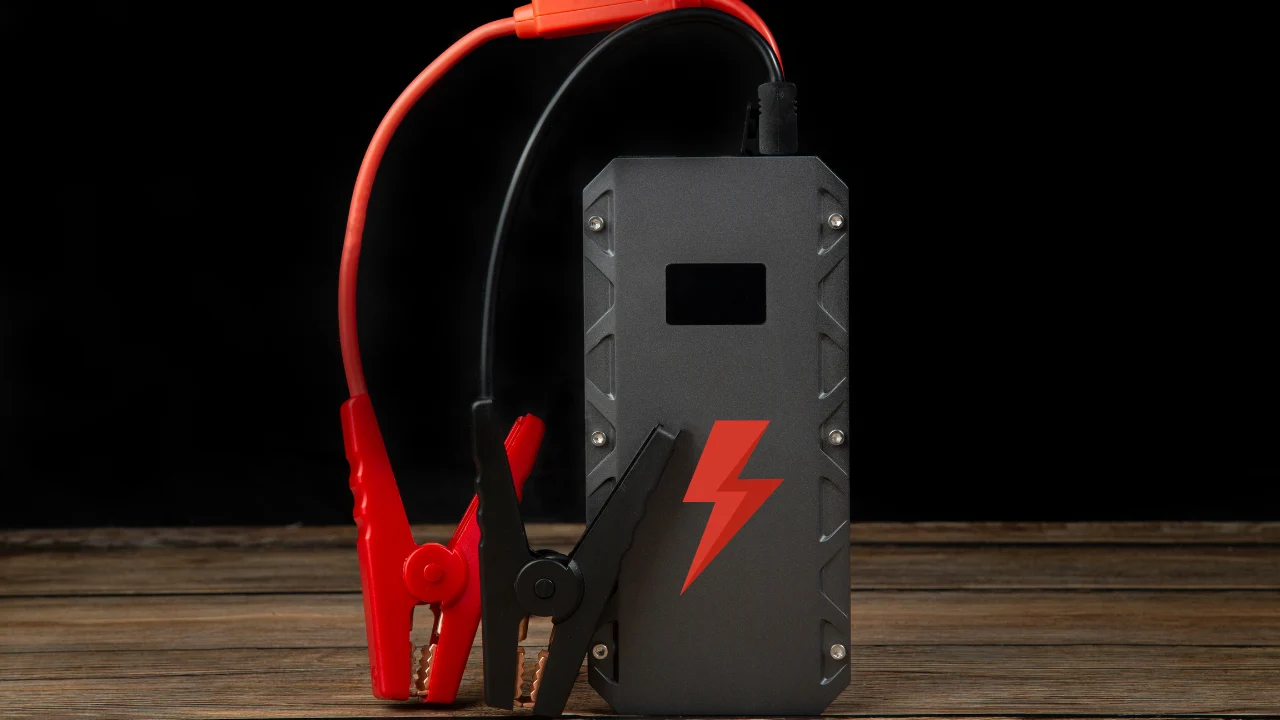When you’re stuck on the side of the road, knowing what is a good power for a jump starter can make all the difference. A sedan typically needs at least 400 amps, while SUVs or trucks might require 1000-1500 amps. Keeping one handy could save you from waiting hours for roadside help. Not sure how to operate a jump starter properly? Follow our step-by-step guide on how to use a jump starter for smooth and safe operation.
I’ve experienced a dead battery more than once, especially in freezing weather. Batteries lose around 20% of their capacity in cold and up to 50% in severe winter conditions. That’s why a powerful jump starter is essential, especially for larger engines or extreme climates.
Quick Look
A good power for a jump starter depends on your vehicle type. Small cars typically need 300-400 peak amps, while SUVs and trucks require around 700 amps. For diesel engines and larger vehicles, aim for 1,000-2,000 amps, especially in colder climates.
Power Ratings in Jump Starters
Selecting the right jump starter can feel tricky, but knowing the basics helps a lot. In this section, we’ll look at three key power ratings—peak amps, cranking amps, and cold cranking amps—so you can understand what to focus on.
1. Peak Amps:
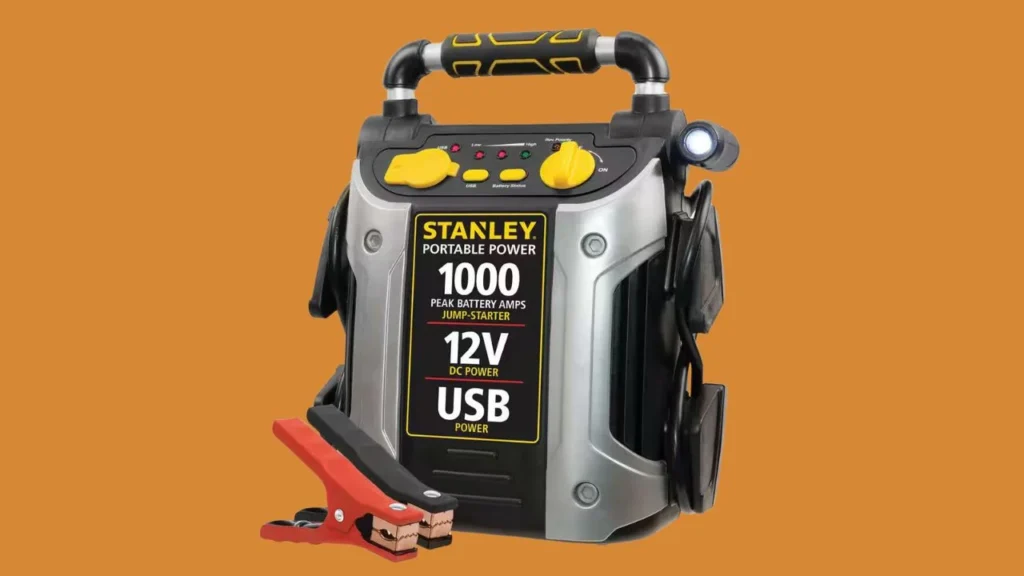
Peak amps represent the jump starter’s highest output for a second or two. Many models boast 1,000 to 1,500 peak amps, but this surge only helps to kickstart your battery. It’s impressive, but peak amps alone don’t determine long-term performance.
2. Cranking Amps: Steady Power Output
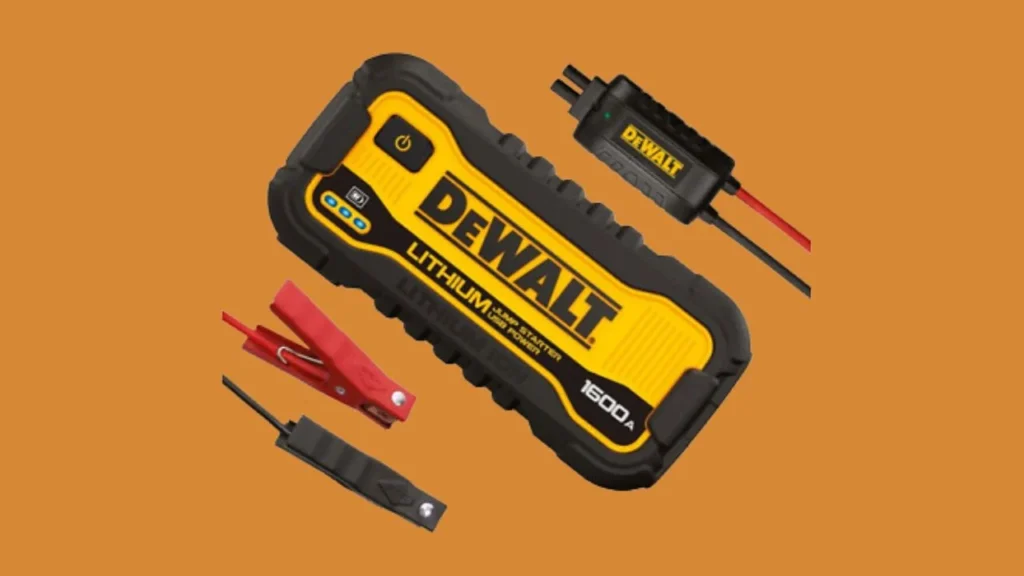
Cranking amps (CA) indicate the power sustained while your engine turns over. A small car usually needs 300-400 amps, while SUVs or trucks may require 500-700 amps. This power keeps the engine cranking until it fires up completely.
3. Cold Cranking Amps (CCA): Essential for Cold Weather
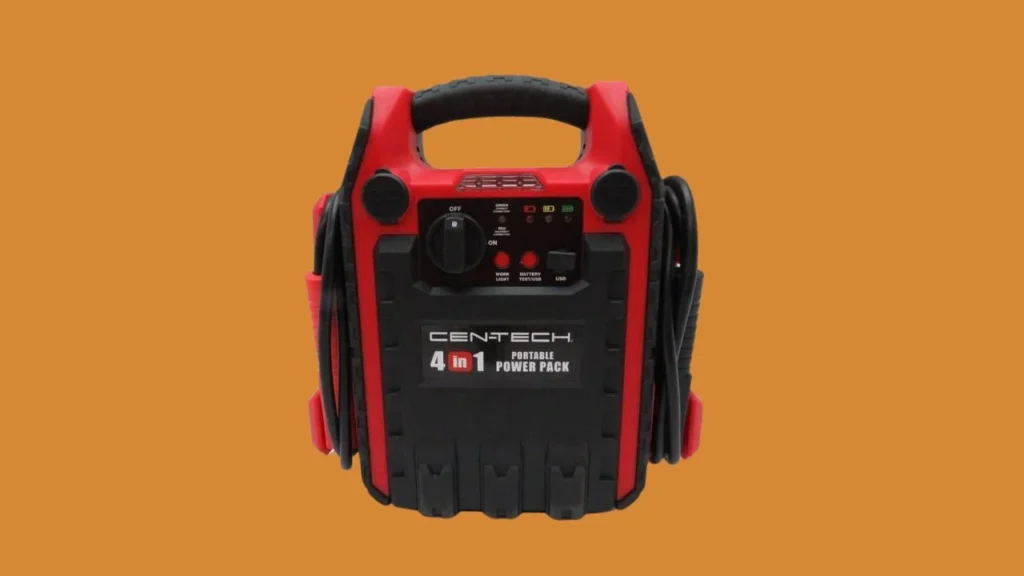
In cold conditions, batteries lose efficiency, and engines need more power. CCA measures the jump starter’s ability at 0°F, where even small cars might need 450 amps or more. For larger vehicles, 800+ amps might be necessary in freezing temperatures.
Jump-starting luxury vehicles like BMWs requires extra care. Learn the proper procedure in our guide on how to jump-start a BMW.
What Is A Good Power For A Jump Starter?
Choosing the right jump starter isn’t as tricky as it seems. It all comes down to the size of your engine and what type of vehicle you drive. Let’s break it down so you’re never caught without enough power when you need it most.
Small Cars (300-400 Peak Amps)

If you drive a small car, a jump starter with 300 to 400 peak amps should do the job. These vehicles typically don’t need much power to crank the engine, even on colder days. It’s a perfect range for compact models like sedans or hatchbacks.
Medium Vehicles (400-700 Peak Amps)

For V6 engines and medium-sized SUVs, 500 to 700 amps offers a reliable margin. You might not use all that power every time, but it guarantees a smooth start even if your battery is a bit worn. This range covers the sweet spot for family sedans and mid-size crossovers.
Large Vehicles and Diesel Engines (700-2000 Peak Amps)

Big vehicles like trucks and diesel-powered engines demand more, especially in winter. A 1500 to 2000-amp jump starter ensures your engine turns over effortlessly, even when glow plugs are needed. Heavy-duty models like full-sized SUVs or diesel trucks will benefit from this range. Dealing with larger vehicles or heavy machinery? Follow our detailed guide on how to jump-start a 24-volt system for proper instructions.
Engine Size and Cold Weather
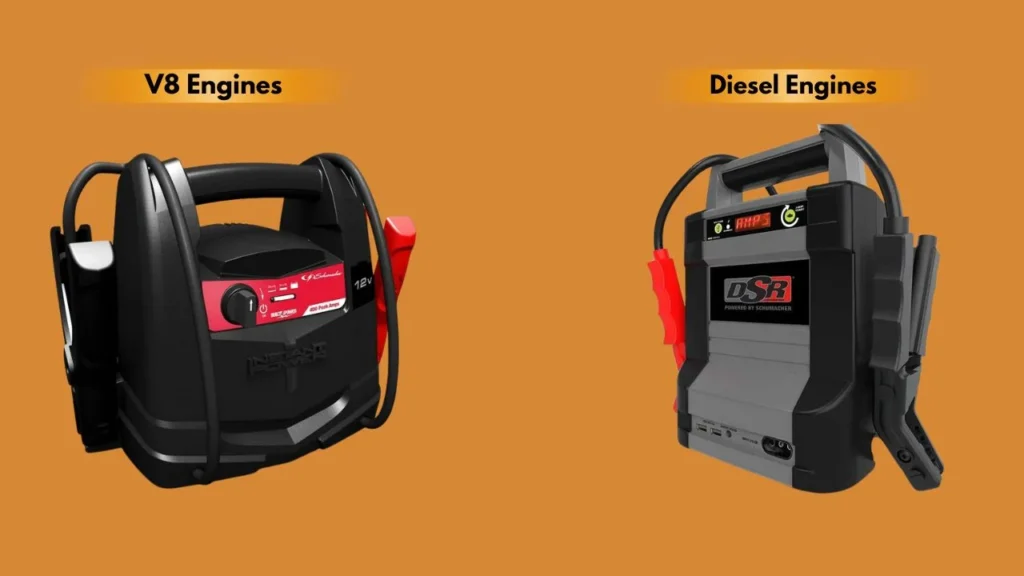
If you’ve got a V8 engine, plan for 400-600 amps, but more if you’re in cold climates. Oil thickens in freezing temperatures, making engines harder to start. For diesel engines in these conditions, always aim toward the 2000-amp mark—you’ll thank yourself later.
Factors That Influence Power Needs
There are a few key things that affect how much power your jump starter will need. From battery health to engine size and weather, every situation adds its own twist. Let’s walk through these factors, so you know what to expect when it’s time to fire up that engine.
1. Battery Condition and Age
Older batteries become unpredictable and often need double the power to start. For example, a 300-amp jump starter might not cut it—you might need 600 amps instead. Batteries nearing the end of their lifespan can catch you off guard when you least expect it.
2. Temperature Conditions
Cold weather is a known battery killer. When temperatures drop below freezing, you’ll need a jump starter with at least 400 Cold Cranking Amps (CCA). This extra power helps push through the thick oil and extra resistance your engine faces in the cold.
3. Engine Size and Type
The bigger the engine, the more amps it needs to start. A V6 gas engine usually requires 300-600 amps, while larger diesel engines may demand over 1000 amps. Diesel vehicles are especially tricky, needing additional power to heat their glow plugs.
4. Battery Type in Use
Lithium-ion batteries are great for portability and fast charging, but lead-acid batteries offer more starting power. You’ll often find lithium in compact jump starters, while heavier units with lead-acid are used for large vehicles or professional setups.
Choosing the Right Jump Starter
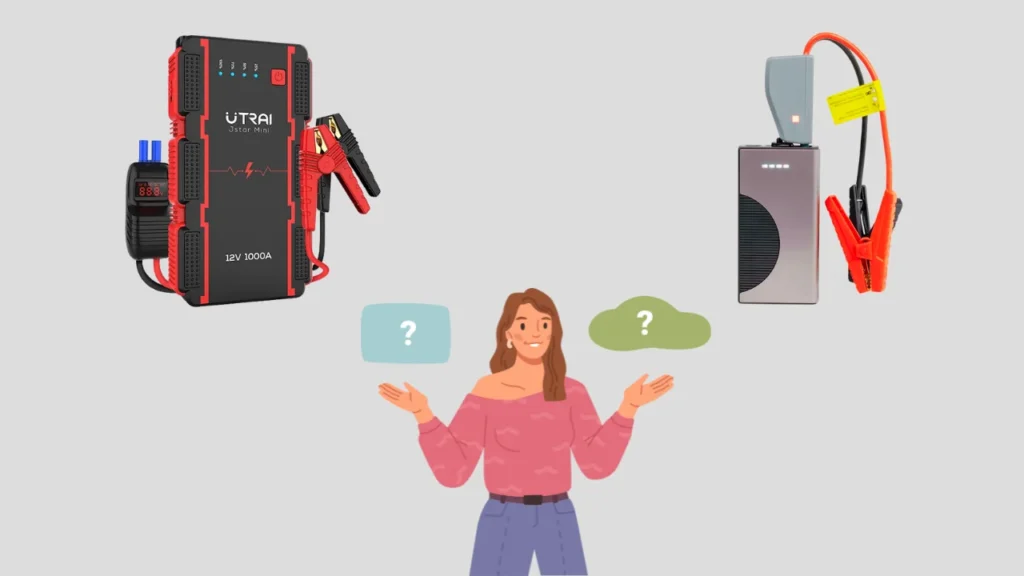
When choosing a jump starter, it’s not just about the power; the features matter too. The right combination of battery type, safety functions, and extras can make a huge difference. Let me walk you through what to look for so you’re fully prepared.
1. Battery Types
Lithium-ion jump starters are a go-to for small and medium vehicles because they’re light and powerful. Lead-acid ones are bulkier but provide extra strength—perfect for trucks and heavy-duty engines. For vehicles with engines over 7 liters, a lead-acid starter will serve you best.
2. Safety Features
You need to ensure your jump starter is safe to use in all conditions. Look for reverse polarity protection to avoid accidental misconnection. Overcharge protection is also key, ensuring the jump starter stays healthy and ready when you need it.
3. Handy Extras
Some models offer built-in USB ports, perfect for charging phones when you’re stuck. A few come with air compressors that inflate tires in under 8 minutes—especially useful when there’s no gas station in sight. These extras might seem small, but they can be lifesavers.
4. Power vs. Portability
Balancing power with portability is crucial. For city driving, a compact 500-amp lithium unit is easy to store and carry. However, if you’re dealing with SUVs or larger engines, a 1500-amp jump starter is the way to go, even if it’s heavier. Not sure how to operate a jump starter properly? Follow our step-by-step guide on how to use a jump starter for smooth and safe operation.
Portability vs. Power Trade-offs
When it comes to jump starters, portability versus power is always a balancing act. Smaller units are convenient for daily use but might not pack enough punch for larger engines. Let’s dive into what you need to consider when choosing between these two factors.
1. Compact Models for Daily Use
Portable jump starters are fantastic for everyday use, fitting easily in your car. Many compact models offer around 500 to 1000 amps, perfect for most sedans and small SUVs. But if you drive a larger vehicle like a truck, you’ll need over 1500 amps to ensure a reliable start.
2. Weight and Storage Considerations
These compact units typically weigh between 2 to 5 pounds, making them easy to store and carry. However, heavy-duty jump starters—often lead-acid models—can weigh 15 to 20 pounds. They offer more power but take up more space, which is something to consider if you’re short on trunk room.
3. Additional Features in Larger Units
Bigger units often come with extra features like air compressors with up to 150 PSI for tire inflation. That’s handy on the road but adds bulk. If portability matters most, stick to a lightweight lithium-ion model. For more power and versatility, though, it’s worth carrying a heavier unit.
How to Maintain a Jump Starter for Optimal Performance
Keeping your jump starter in top shape isn’t hard, but it does require consistency. A little bit of routine care ensures it’s ready when you need it most. Let’s look at some practical tips to help your jump starter last longer and work efficiently.
From my experience, checking the battery level monthly works wonders. I aim for at least 75% charge because batteries can lose up to 30% of their power in cold weather. Trust me, there’s nothing worse than finding your jump starter dead during an emergency!
Proper storage is essential too. I keep mine in the glove compartment, but away from heat sources since high temperatures—anything above 85°F—can reduce battery life by 20% every year. A cool, dry spot in the car is ideal.
After every use, I make it a habit to recharge the unit fully. Even if it works great after one use, lithium-ion models need regular charging to stay effective. Ignoring this step can cut their lifespan by as much as 30%.
Final Words
So, what is a good power for a jump starter? For small cars, 300-400 peak amps work fine, while SUVs need about 700 amps. Diesel trucks may require up to 2,000 amps in winter.
Having the right jump starter means fewer emergencies and headaches on cold mornings. Just remember to pick one matching your vehicle type and keep it charged regularly. Trust me, it’s worth it! In the end, having the right power on hand saves time, money, and frustration. Looking for the right jump starter for heavy-duty vehicles? Check out our recommendations for the best jump starter for diesel trucks to keep your truck running.
